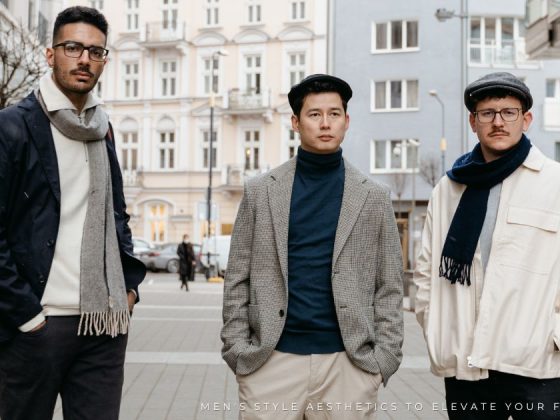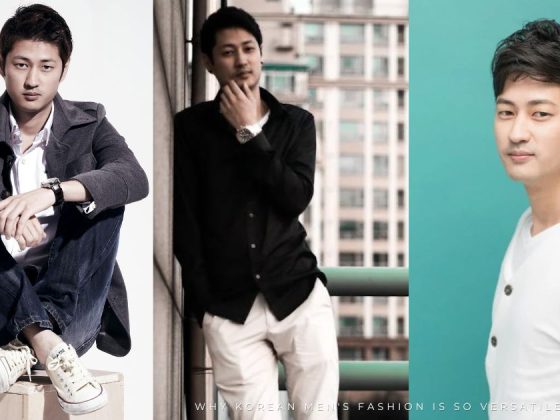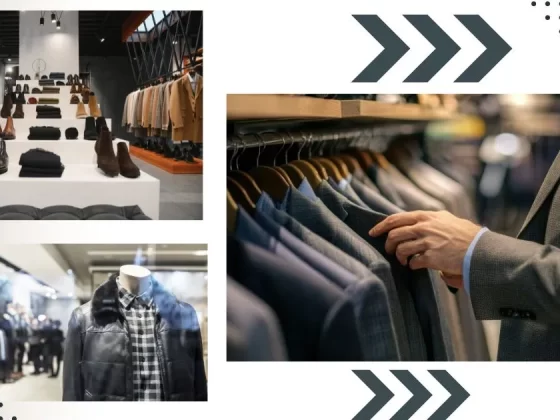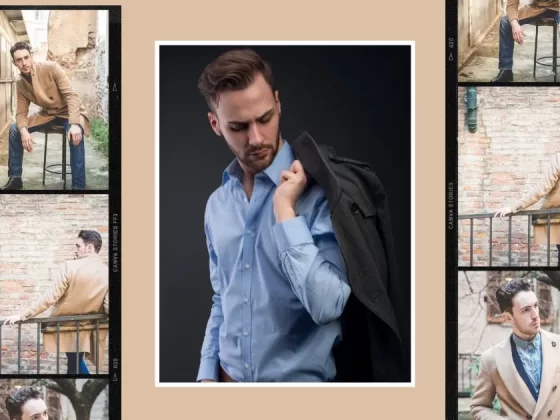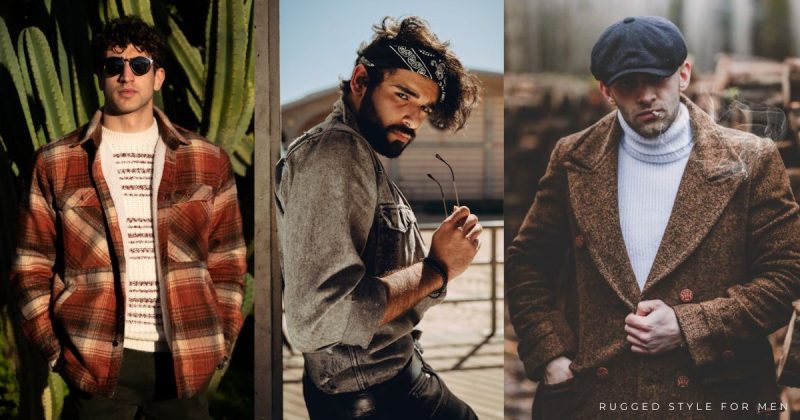
Rugged style is more than just a fashion trend – it’s a lifestyle that embodies strength, practicality, and timeless appeal. Drawing inspiration from outdoor adventures, manual labor, and classic utilitarian fashion, the rugged style for men emphasizes durability and a grounded, masculine aesthetic. It speaks to the man who values functional, sturdy clothing that looks just as good after years of wear as it did fresh off the rack. Whether trekking through nature or navigating the urban jungle, rugged style projects confidence, readiness, and an unpolished charm that is hard to replicate.
This aesthetic is not about chasing fleeting trends or polished, fragile pieces. Instead, rugged fashion thrives on simplicity, durability, and authenticity. By embracing heavy fabrics, weather-resistant materials, and earthy tones, the rugged look transcends seasons and ages gracefully. It’s a style for men who want their clothes to tell a story—one of adventure, resilience, and self-reliance. If you’re looking to add some rugged flair to your wardrobe, this comprehensive guide breaks down the essential elements and how to make this timeless aesthetic your own.
The Pillars of Rugged Style for Men
Rugged fashion is rooted in timeless pieces designed to last and evolve. While the aesthetic leans heavily on durability and practicality, it’s also about creating a versatile, masculine wardrobe that exudes confidence, readiness, and a connection to the outdoors. The pillars of rugged fashion are built on a foundation of functional materials, simple designs, and a focus on quality craftsmanship. Each piece within this aesthetic serves a purpose—whether that’s to protect you from the elements, enhance your comfort, or tell a story of your lifestyle.
Understanding the foundational elements of rugged fashion is key to pulling off this style with ease and confidence. Here’s a deeper dive into each essential piece and how it contributes to the rugged look.
1. Flannel Shirts – A Timeless Workhorse
Flannel shirts have long been associated with rugged outdoor lifestyles—whether they’re worn by lumberjacks, farmers, or weekend adventurers. Their thick, cozy fabric and classic plaid patterns make them the perfect garment for the rugged man who needs to stay warm without sacrificing style.
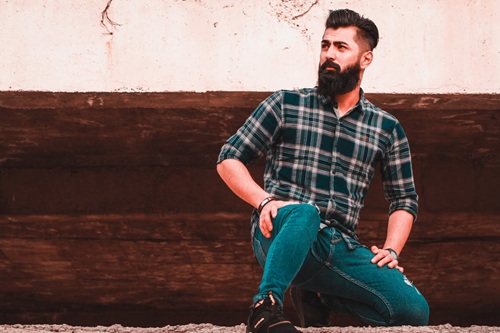
Material & Durability:
Flannel shirts are traditionally made from wool, cotton, or a blend of the two. The fabric is soft to the touch yet durable enough to withstand wear and tear. Over time, flannel gets more comfortable, taking on a unique softness that makes it even more desirable. When choosing a flannel, look for heavyweight versions, as these will hold up better to the elements and provide more warmth during colder months.
Versatility:
Flannel shirts come in various weights, allowing you to layer them up or down depending on the weather. A heavier flannel can function as your jacket, while a lighter version can be worn under a leather jacket for a stylish and functional layered look. For added ruggedness, go for a classic checkered pattern or deep earthy colors like burgundy, navy, or forest green.
Styling Tip:
Flannels can be styled casually by wearing them untucked with jeans or cargo pants. Alternatively, you can roll up the sleeves for a laid-back look or wear them as a shirt-jacket hybrid by layering them over a thermal henley or t-shirt.
2. Denim and Cargo Pants – The Backbone of Rugged Bottoms
Rugged style relies on pants that can take a beating, whether you’re working outdoors or exploring city streets. Denim and cargo pants are the primary choices for achieving a utilitarian yet stylish bottom half.
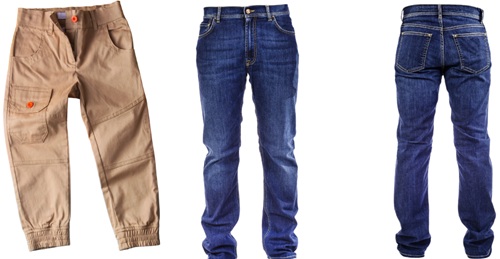
Denim:
Denim is the quintessential rugged fabric, offering durability, comfort, and timeless appeal. Raw denim, in particular, is a favorite in rugged fashion due to its ability to develop a unique, personalized fit over time. The more you wear raw denim, the more it conforms to your body, creating natural creases and fading that add character and authenticity.
Types of Denim:
- Raw Denim: This is denim that hasn’t been pre-washed, which allows it to break in naturally over time. It’s stiff initially but softens with wear.
- Distressed Denim: Faded, ripped, or frayed denim creates an edgier, more rugged look. It adds authenticity and often tells the story of its owner.
- Selvedge Denim: Known for its high-quality craftsmanship and durable construction, selvage denim has tightly woven edges that prevent fraying. It’s an investment piece that only improves as it ages.
Fit & Style:
For a classic rugged look, go for straight-leg denim that allows movement but maintains structure. Avoid skinny jeans, as they don’t complement the broader, tougher silhouette of rugged fashion. A slightly tapered fit is perfect for showing off boots without looking too slim or restricting.
Cargo Pants:
Cargo pants provide an extra level of utility, which is central to rugged style. With their multiple pockets, these pants offer practical storage space and are typically made from sturdy materials like canvas or twill.
Material & Durability:
Look for cargo pants made from heavy-duty cotton or cotton blends, which are both breathable and durable. For colder weather, you can opt for canvas cargo pants with a bit of insulation for added warmth and protection.
Styling Tip:
Pair cargo pants with boots for a solid, cohesive rugged look. If you’re aiming for a more tailored appearance, choose a slim-fit version of cargo pants, but ensure the material still has structure.
3. Leather and Waxed Jackets – Durable Outerwear with Character
When it comes to outerwear in rugged style, the focus is on durability, warmth, and functionality. Leather and waxed jackets are the go-to options for creating an iconic rugged silhouette.

Leather Jackets:
Leather jackets are a classic element of rugged fashion that transcends both style and function. They’re built to endure, offering protection from the elements and a sharp, masculine look.
Material & Durability:
Full-grain leather is the highest quality leather you can get. It’s thicker, and tougher, and develops a beautiful patina over time, making it a great investment. As leather ages, it softens and molds to the wearer’s body, making each jacket unique.
Styles to Look For:
- Biker Jacket: A slim-fitting, rugged look that channels a rebellious vibe.
- Field Jacket: More relaxed with added utility, often featuring multiple pockets and a looser fit.
- Bomber Jacket: Shorter in length and typically includes ribbed cuffs and waistbands, giving it a vintage feel.
Styling Tip:
Pair your leather jacket with a flannel shirt or a hoodie for an effortlessly rugged, layered look. The contrast between the structured leather and soft flannel adds depth and variety to your outfit.
Waxed Jackets:
Waxed jackets are ideal for dealing with rainy or windy conditions. They offer a great balance of style and function, with the wax coating providing water resistance while maintaining a rugged appearance.
Material & Durability:
Made from cotton or canvas with a wax coating, these jackets provide great protection from rain and wind. The more you wear a waxed jacket, the more it molds to your body, enhancing both comfort and style.
Styling Tip:
Layer your waxed jacket over a thick knit sweater or fleece for a versatile outdoor outfit. For a classic touch, add a plaid scarf and leather gloves to complete the look.
4. Sturdy Boots – The Foundation of Rugged Fashion
Footwear is one of the most crucial elements of rugged style. A pair of well-crafted, durable boots are more than just a fashion statement—they are the foundation of your entire outfit. Rugged boots aren’t just stylish; they’re built to withstand the rigors of outdoor life while offering comfort and durability.
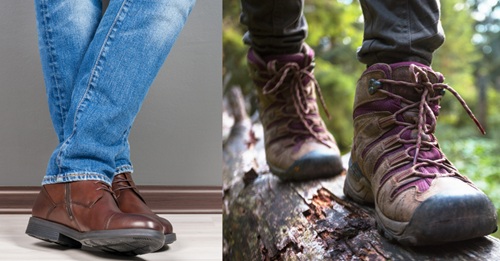
Types of Boots:
- Work Boots: The epitome of rugged footwear, work boots are designed for comfort and durability. Opt for options with thick rubber soles, steel toes, and high-quality leather.
- Hiking Boots: If you’re venturing into the wilderness, a solid pair of hiking boots is essential. These boots provide ankle support and traction while protecting your feet from rough terrain.
- Combat Boots: With their military roots, combat boots are incredibly durable and stylish, offering both functionality and a tough, cool vibe.
- Chelsea Boots: For a more refined look while maintaining rugged appeal, distressed or suede Chelsea boots work well with both denim and chinos.
Fit & Comfort:
Rugged boots should fit snugly but with enough room to layer socks for warmth. Make sure they have a sturdy, supportive insole for long-term comfort, especially if you’re wearing them for hours at a time.
Styling Tip:
Rugged boots work best when they’re a little worn in. Opt for boots with scuffs or creases to give them character and a lived-in look. Pair them with straight-leg denim or cargo pants for a cohesive, tough silhouette.
5. Chunky Knits and Outerwear – Layers That Serve a Purpose
Layering isn’t just for style—it’s a key component of rugged fashion because it offers both warmth and function. Chunky knits and substantial outerwear are essential for layering during colder months.
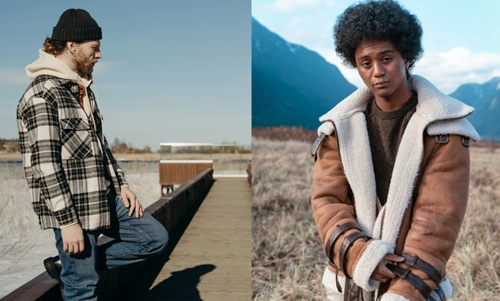
Chunky Knits:
Heavy-knit sweaters and cardigans made from wool or thick cotton are staples of the rugged man’s wardrobe. They offer warmth while remaining breathable, making them perfect for layering in winter or cooler spring and fall months.
Material & Durability:
Look for natural fibers like wool, which retain warmth even when wet. Wool also has a natural ability to wick away moisture, making it perfect for unpredictable weather.
Styling Tip:
Chunky knits can be paired with flannel shirts or worn under a waxed jacket for added warmth. Choose neutral tones like gray, beige, or navy to create a versatile base for layering.
Outerwear:
The right outerwear completes your rugged look. Whether you’re dealing with snow, rain, or wind, durable coats are essential for the rugged man. From heavy-duty parkas to sleek leather coats, outerwear is where both style and functionality meet.
Styles to Consider:
- Parka: Warm, insulated, and perfect for winter conditions.
- Field Jacket: A lighter option that’s perfect for spring or fall, offering utility and style.
- Shearling-lined Coats: These are perfect for keeping warm in colder climates while maintaining rugged charm.
Styling Tip:
For added style, choose coats with distinctive details like leather elbow patches or fur-lined hoods. Pair these with durable denim and boots to complete the look.
Crafting the Perfect Rugged Color Palette
Rugged style gravitates toward earthy, muted tones. Colors like olive green, brown, navy, gray, and tan dominate this aesthetic. Dark denim and black leather add contrast, while subtle splashes of deep red or mustard can provide a bit of flair.
Palette Breakdown:
- Base Colors: Olive, tan, navy, gray
- Accent Colors: Burgundy, forest green, rust
- Footwear and Accessories: Dark brown, black, distressed leather
Layering Like a Pro – A Rugged Essential
Layering isn’t just a fashion statement in rugged style—it’s practical. When facing unpredictable weather, multiple layers keep you warm and protected. Plus, layered outfits add depth and visual interest.
Layering Formula:
- Base Layer: Start with a simple cotton or merino wool t-shirt or henley.
- Middle Layer: A flannel shirt or heavy work shirt.
- Insulating Layer: Chunky knit sweater or fleece-lined vest.
- Outer Layer: Waxed canvas jacket, leather jacket, or parka.
Pro Tip: Let each layer peek through, allowing textures and colors to create contrast.
Boots: The Cornerstone of Rugged Style
Rugged style begins from the ground up, and nothing defines this look more than a solid pair of boots. Scuffed, worn-in boots tell a story and add authenticity.
Choosing the Right Boot:
- Work Boots: Durable and versatile – perfect for any rugged look.
- Combat Boots: Tough and ready for urban or outdoor settings.
- Hiking Boots: Ideal for outdoor adventures but equally stylish for city wear.
- Distressed Leather Boots: A refined, urban-friendly take on rugged footwear.
Finding the Right Fit
Rugged style leans toward a relaxed but structured fit. Clothes should feel comfortable and functional without appearing baggy or overly tight. The goal is a silhouette that emphasizes masculinity while maintaining practicality.
Fit Guidelines:
- Jeans/Pants: Straight-leg or slightly tapered. No skinny fits.
- Shirts: Slightly oversized flannels or work shirts.
- Jackets: Roomy enough for layering but not boxy.
Accessories for the Rugged Man
Accessories should follow the same principles—functionality over flash. Think minimal yet sturdy designs.
Key Accessories:
- Leather Belt – Thick, durable, and simple.
- Canvas/Leather Backpack – Perfect for everyday use.
- Field/Pilot Watch – Rugged and built for adventure.
- Headwear – Beanies, flat caps, or wool hats.
- Gloves and Scarves – Knit or leather options for colder months.
Blending Modern and Rugged Aesthetics
You don’t need to look like a lumberjack every day. Modernizing rugged fashion makes it adaptable for urban environments.
How to Modernize the Look:
- Pair a leather jacket with dark jeans and clean Chelsea boots.
- Swap out hiking boots for minimal sneakers for a more contemporary touch.
- Use a suede bomber instead of heavy-duty outerwear.
Final Thoughts – Why Rugged Style Endures
Rugged style appeals to men who appreciate durability, simplicity, and function. It reflects resilience, strength, and an appreciation for clothes that tell a story over time. Unlike fleeting fashion trends, rugged fashion holds lasting value, allowing you to build a wardrobe that evolves with you.
By investing in high-quality, durable pieces, you not only cultivate a distinct, masculine aesthetic but also ensure your clothing withstands the test of time. Whether braving the great outdoors or navigating the city streets, rugged style gives you the confidence to take on whatever comes your way.

